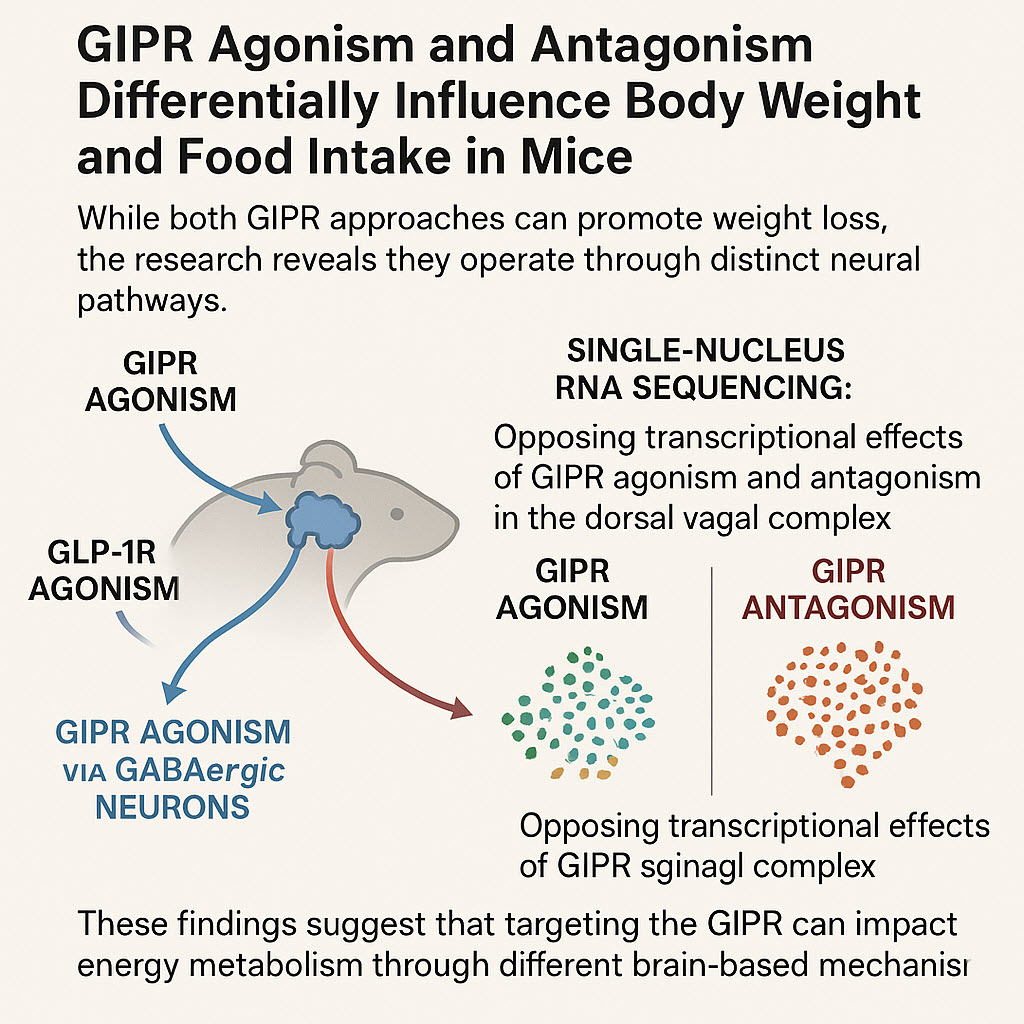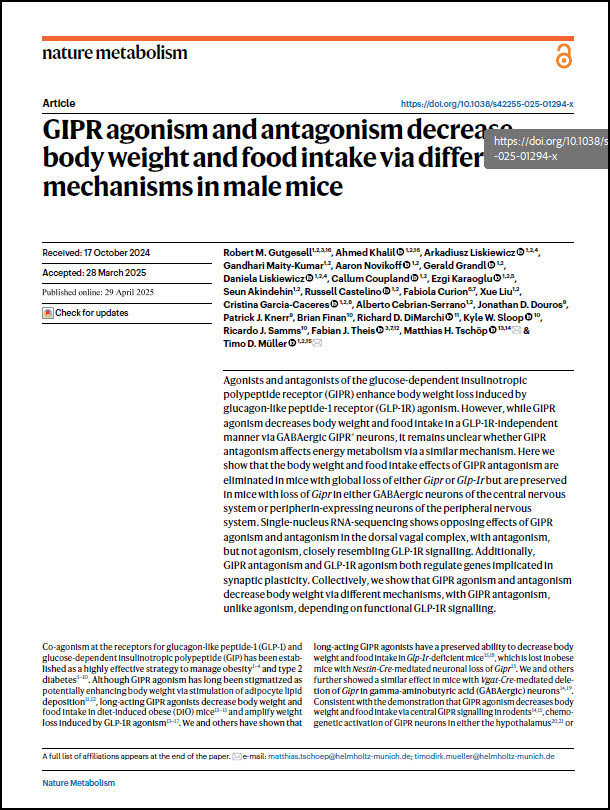This scientific paper explores the mechanisms by which GIPR agonism and antagonism influence body weight and food intake in mice, particularly in combination with GLP-1R agonism. While both GIPR approaches can promote weight loss, the research reveals they operate through distinct neural pathways. The study demonstrates that GIPR agonism acts via GABAergic neurons in a GLP-1R-independent manner, whereas GIPR antagonism requires functional GLP-1R signaling and does not depend on GIPR signaling in GABAergic or peripheral neurons. Single-nucleus RNA sequencing further supports this by showing opposing transcriptional effects of GIPR agonism and antagonism in the dorsal vagal complex, with GIPR antagonism closely resembling GLP-1R signaling. These findings suggest that targeting the GIPR can impact energy metabolism through different brain-based mechanisms.


Audio Overview (Google NotebookLM)
(14 minutes 57 seconds)

